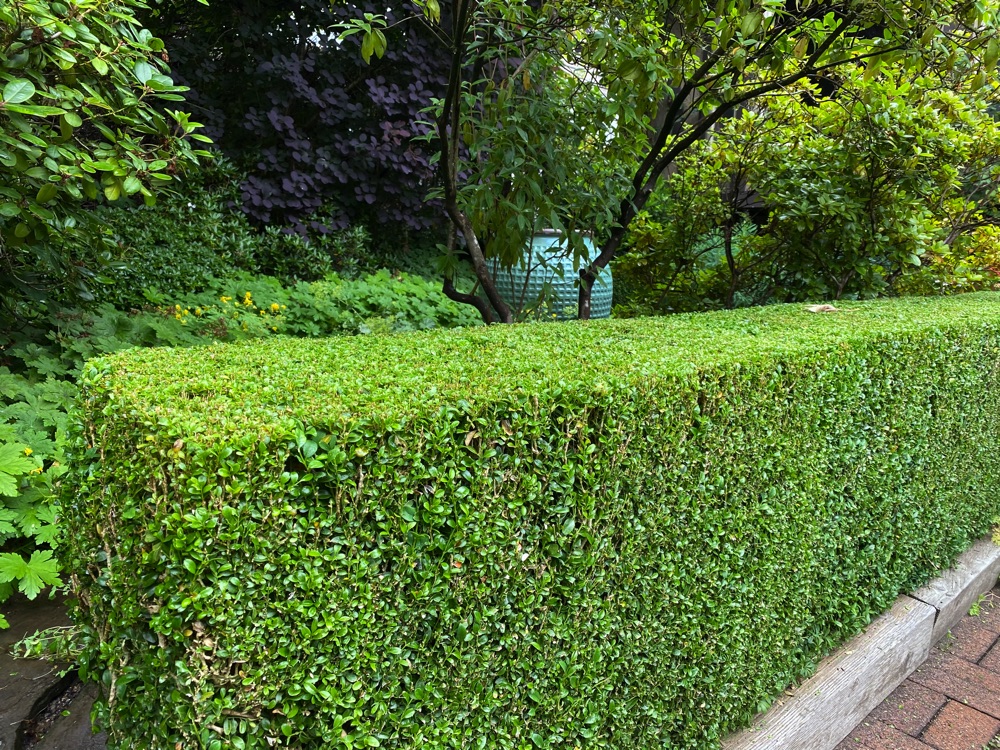I’ve always been partial to clipped boxwood. I’m English, but that is not the reason. You will find beautiful trimmed boxwood in many Dutch, French and Belgian gardens as well as Japanese and Italians garden. They all make bold use of boxwood and use it to great effect in their exquisite gardens.
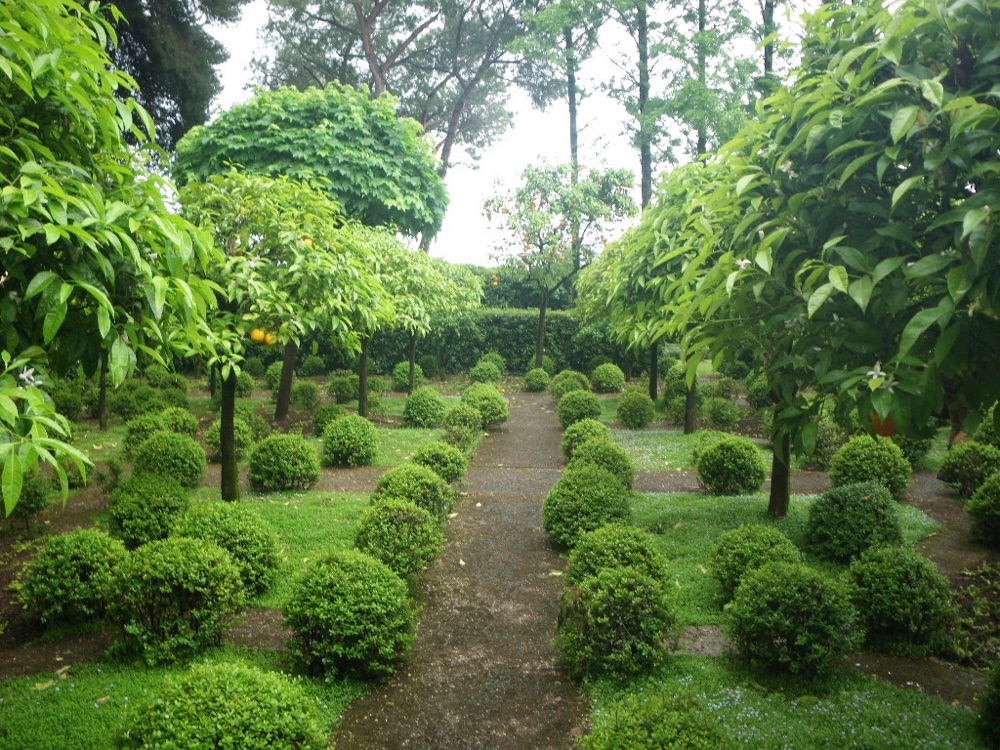
Since visiting such delightful gardens as Landriana outside Rome, Villandry in France and such iconic English gardens as Hidcote, Sissinghurst and Great Dixter, found myself inescapably looking for ways to add lovely boxwood balls, cones, pillars and parterres to my own garden.
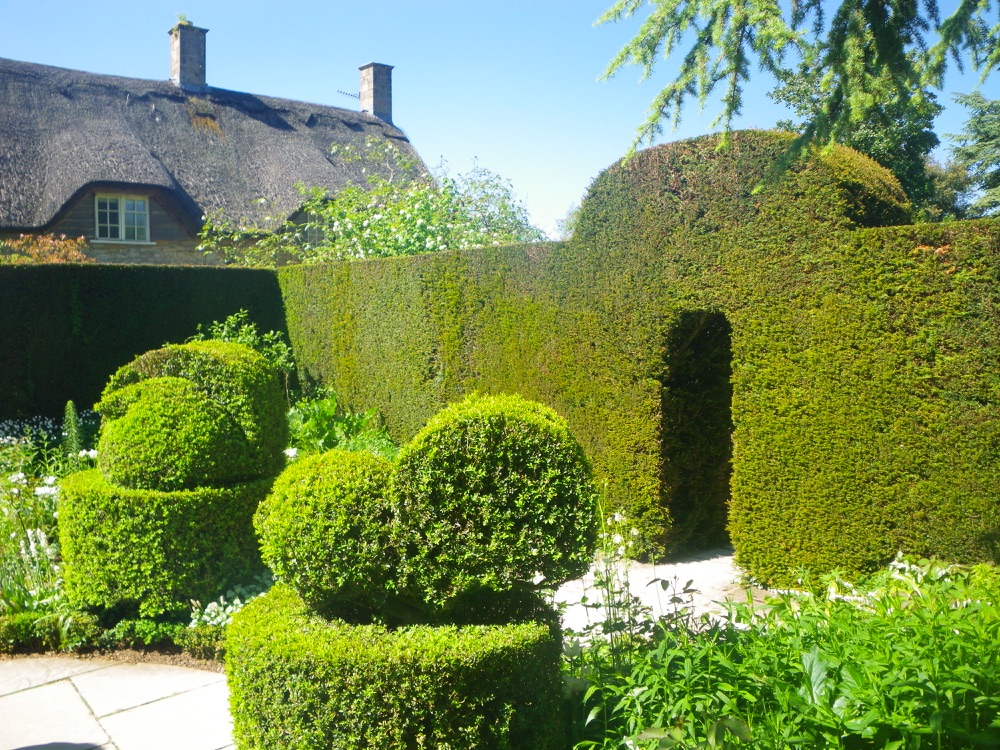
I joke with friends that I’ve become something of a “clipped-o-maniac” over the years because of my fascination with shaping and trimming boxwood.
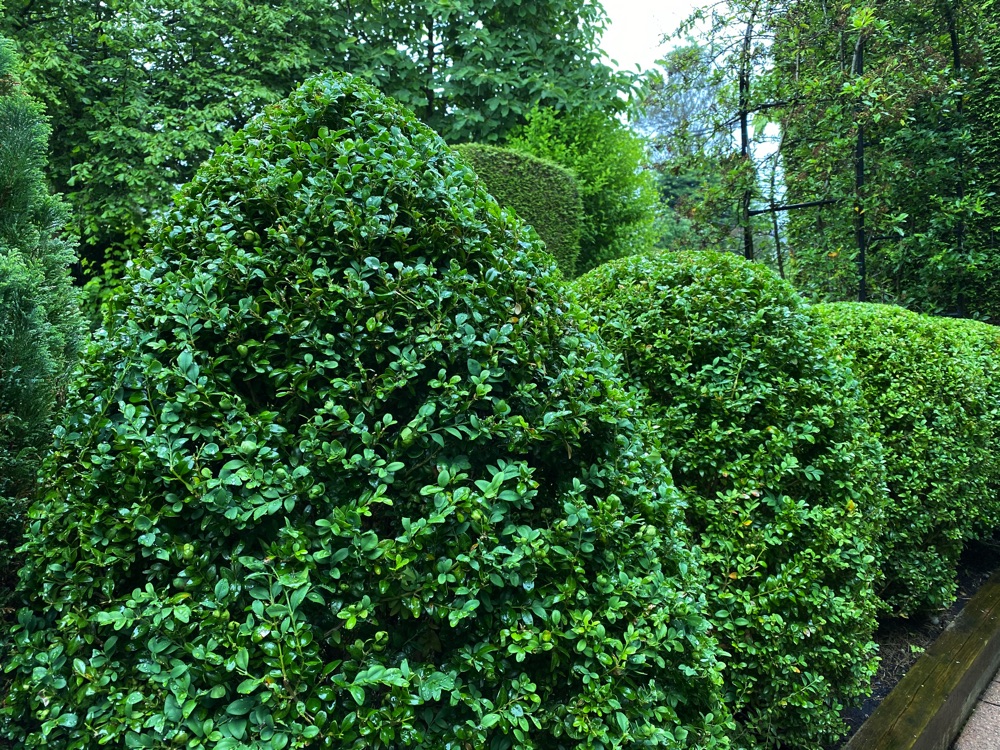
Fact is, I wish I had done more of this type of planting years ago. It goes perfectly with my idea of green-on-green landscaping whereby you select various evergreen plants to create layers of shades of green.
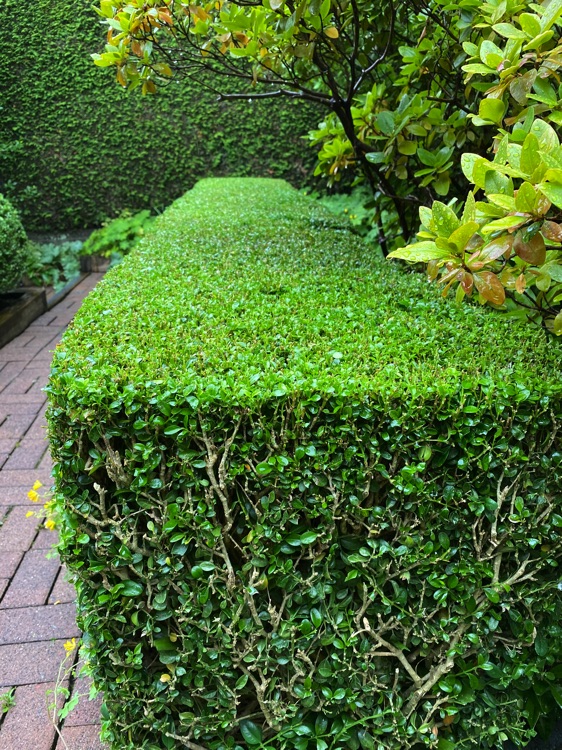
The plants I have tended to use for this include rhododendrons and azaleas as well as Japanese holly (Ilex crenata) and popular shrubs such as sarcococca, skimmia, pieris and ground-covering plants like Geranium macrorrhizum and Cotoneaster dammeri.
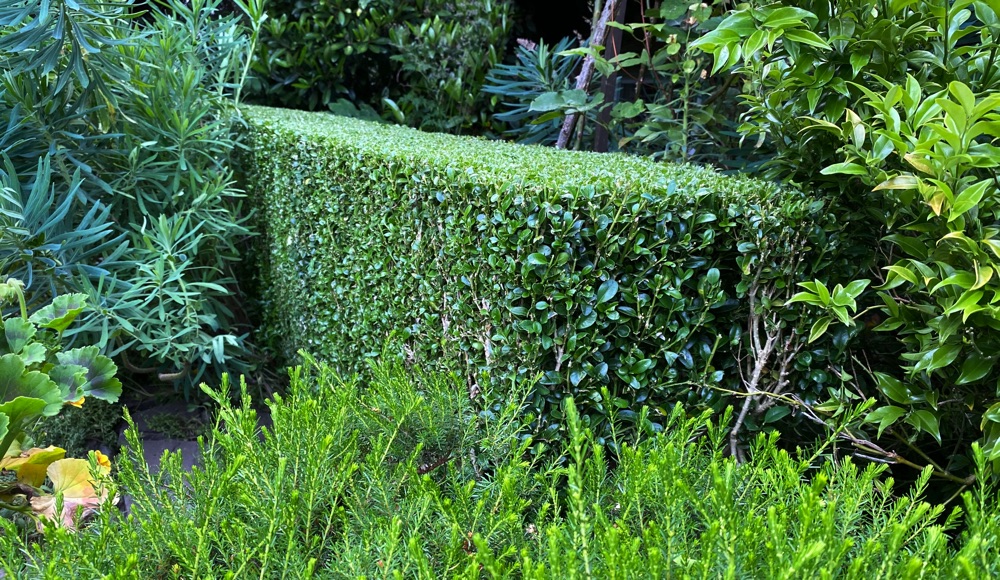
There are many others, too many to mention here, but if you get into this style of planting, you’ll also want to make use of ornamental grasses and some structural, evergreen perennials such as hellebore and euphorbia.
I’ve tried trimming my boxwoods myself, without much success. I can never get the lines straight enough or clipped crisp enough.

But I have a secret weapon: my maintenance landscapers, Daniel and Nina Truong, who come once or twice a year to clip my boxwoods perfectly.
They have excellent equipment and great technical skills, and, perhaps an added bonus, they never leave a shred of leaf debris when finished clipping. My neighbours have noticed these skills and wasted no time in hiring the Truongs to do their hedges.
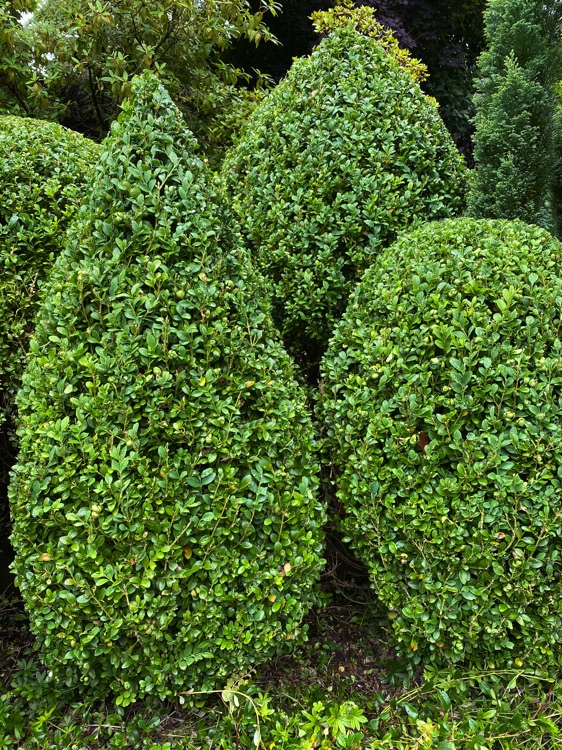
Here, you see some examples of my boxwood hedges and solitary plants after the Truongs have given them a haircut for summer.
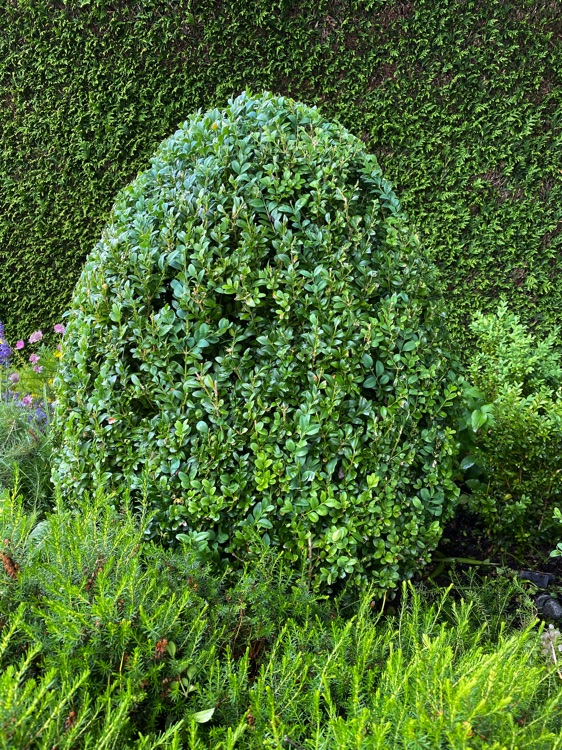
There are dozens of varieties of Buxus sempervirens. You will be overwhelmed by the range if ever you go looking to buy one at your garden centre. ‘Suffruticosa” is popular dwarf kind but I find it grows too slowly. I much prefer the straight Buxus sempervirens which grows much faster and is able to be clipped and shaped very easily.
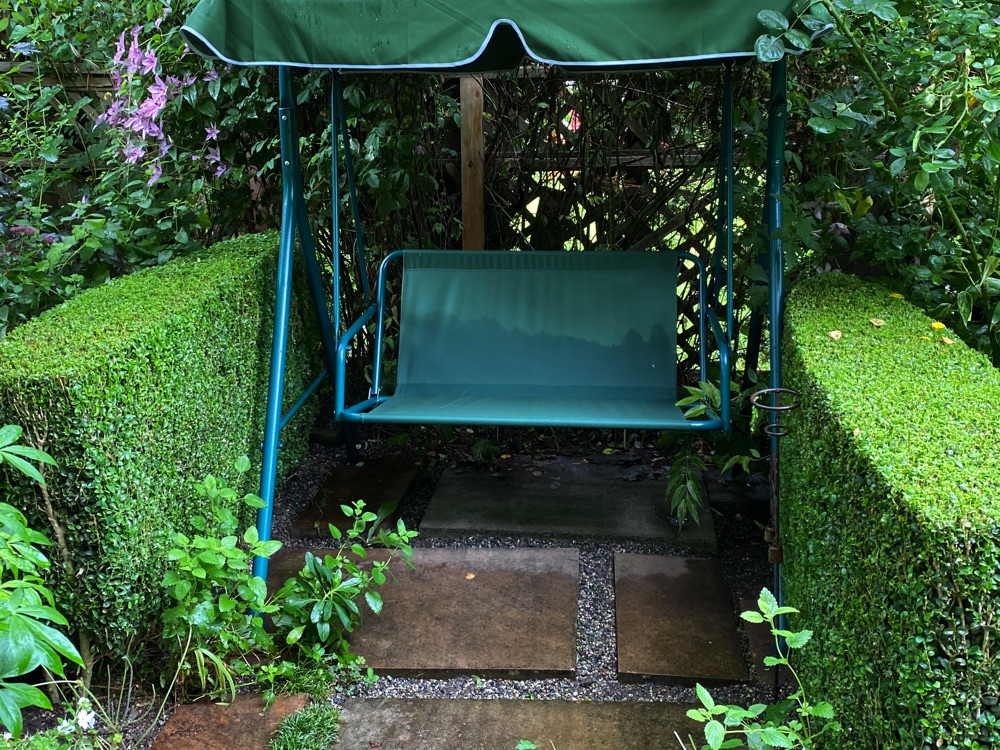
If you’re smart, you’ll look for a sizeable plant that has already got some shape to it. These are often available for not very much money at such places as Home Depot or Costco. At the garden centres, they are usually more expensive and not necessarily better quality.
Friends have warned me about the risk of boxwood blight. This fungal disease was first spotted in the UK in the 1990s and has spread worldwide since then.

As I understand it, the cause is rather complex and can be due to weak cultivars, poor air circulations, bad garden practices (such as over pruning in wet weather and leaving clipped leaves on the ground) and also the failure to water during hot spells. I understand that spraying with fungicide does not help.
For me, I am grateful that I have not had this problem. I hope I never do as I would be truly devastated if I lost my lovely boxwood hedges and sculptural cones and ball-shapes. Fingers crossed.
